After a month in Granada, you start thinking that all of Nicaragua is hot, humid and happily slow-moving. All you need to change your mind is a weekend in Matagalpa. A two and a half hours drive from Granada north, and you are in a different country – one where spring subdued the summer, surrounding highlands are abound with cloud forests and coffee fincas planted by German immigrants in the 19th century still produce coffee. But before venturing into the mountains, we spent a day walking the city and making some unexpected discoveries.
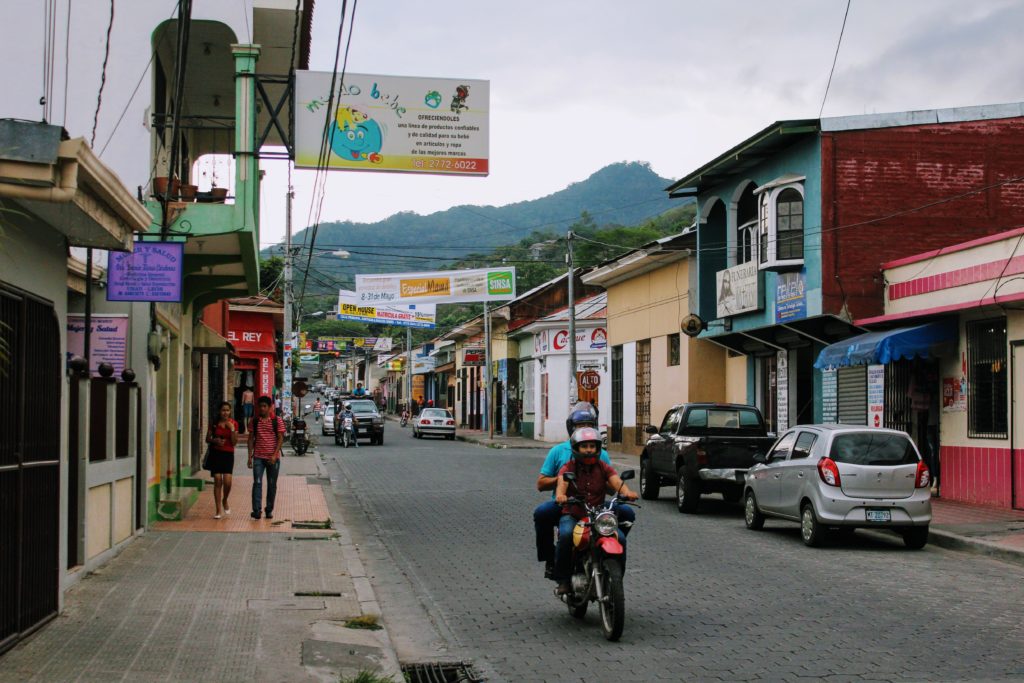
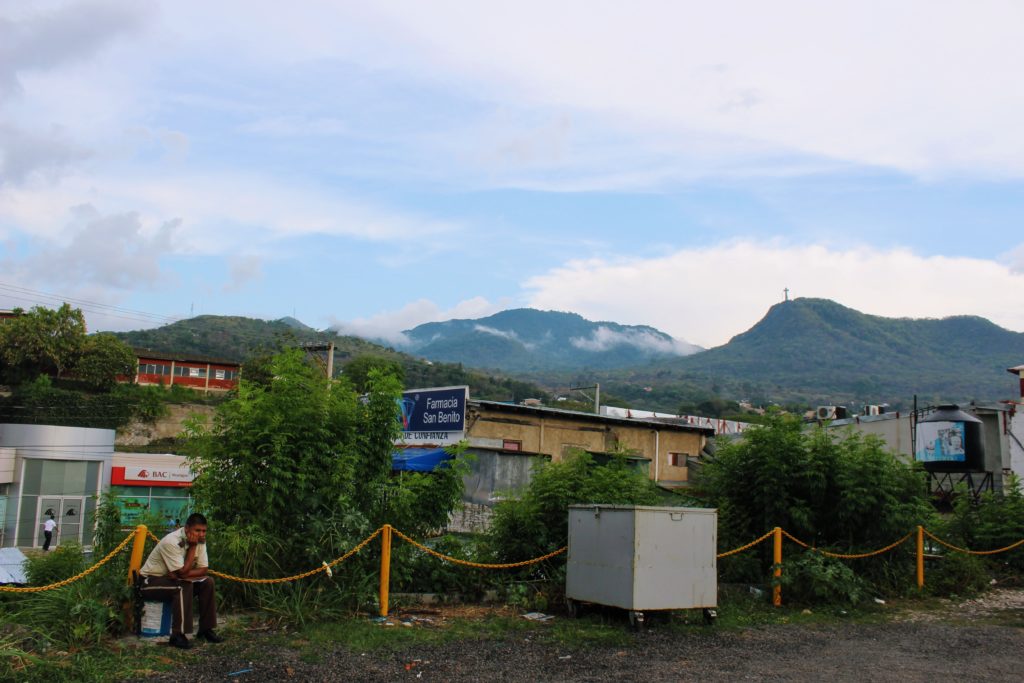
After a few hours in the city, you notice it’s much livelier than Granada. Instead of tourists lazily sipping cocktails, the center of Matagalpa is all about commerce.
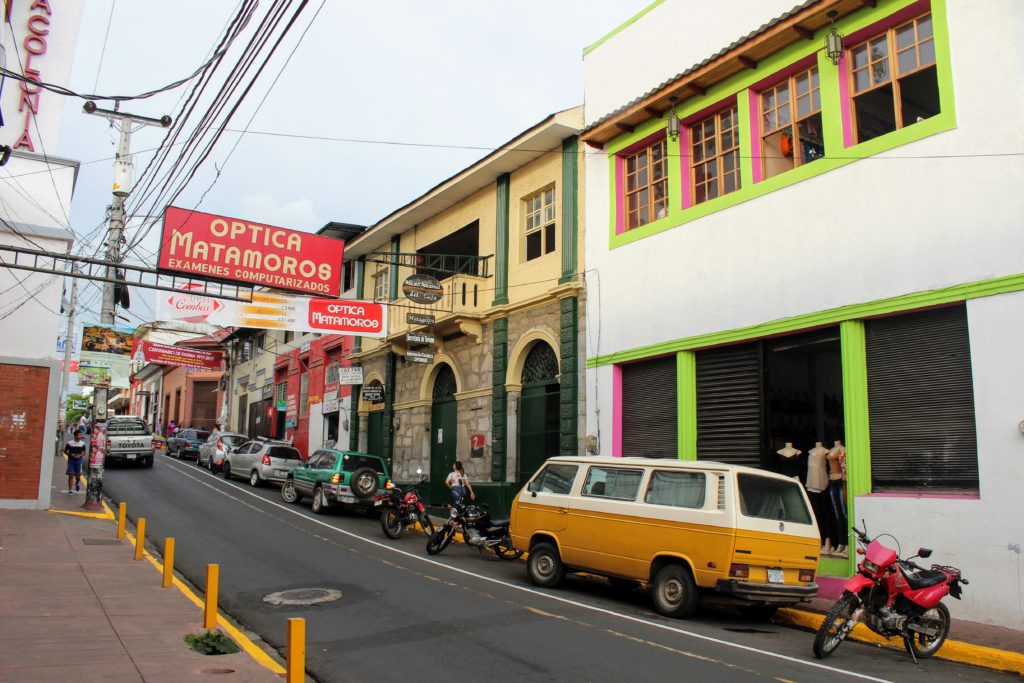
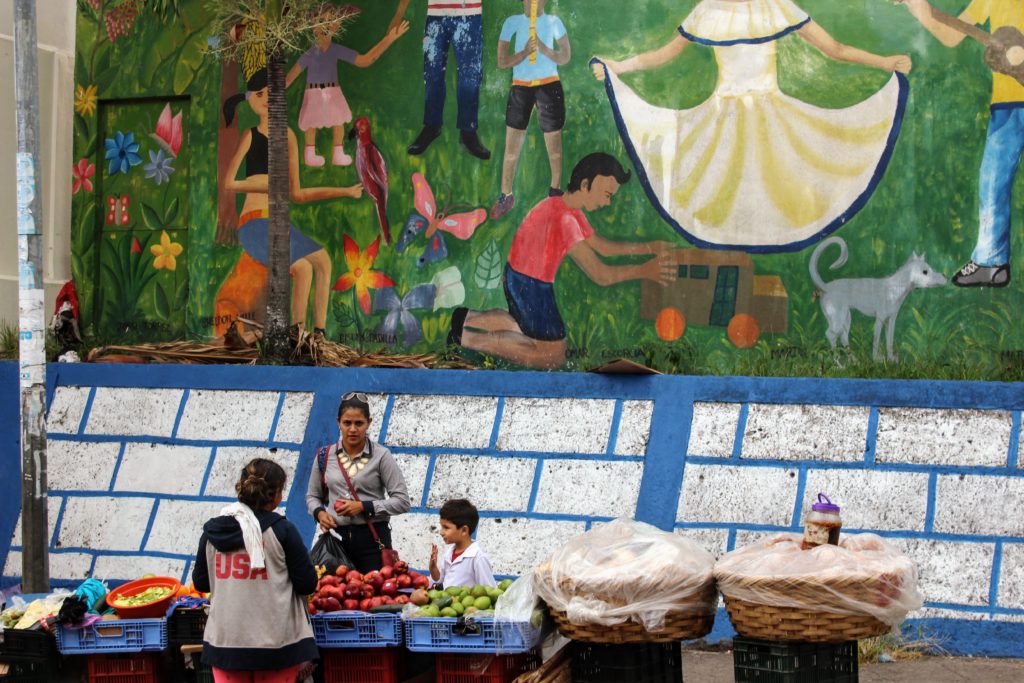
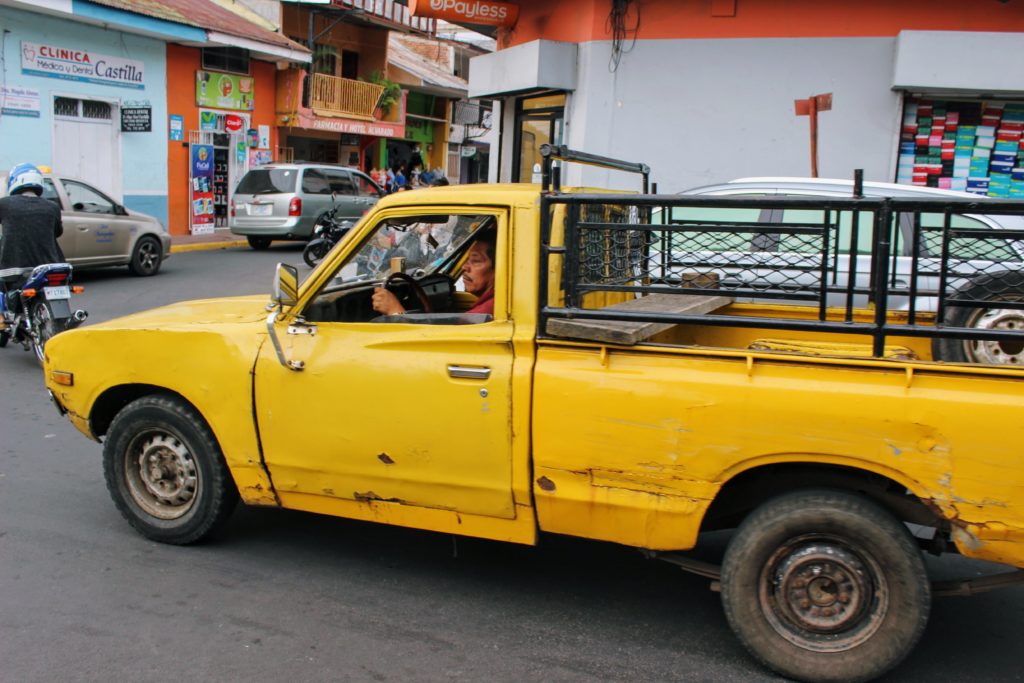
The birthplace of Carlos Fonseca Amador, the founder of the Sandinista Front, Matagalpa has its share of revolutionary vigor.
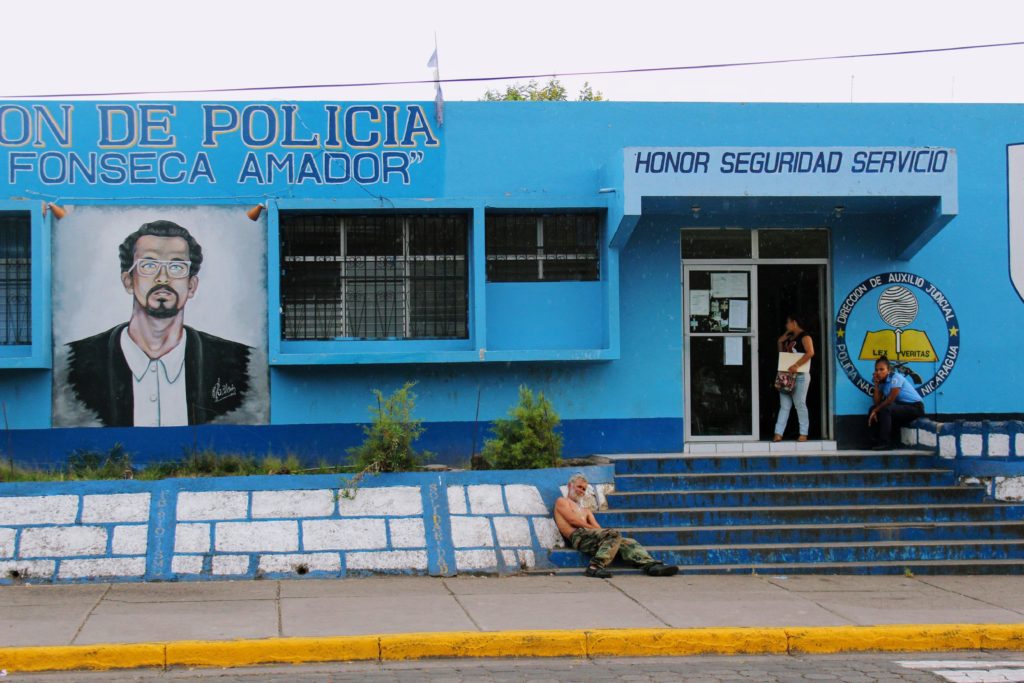
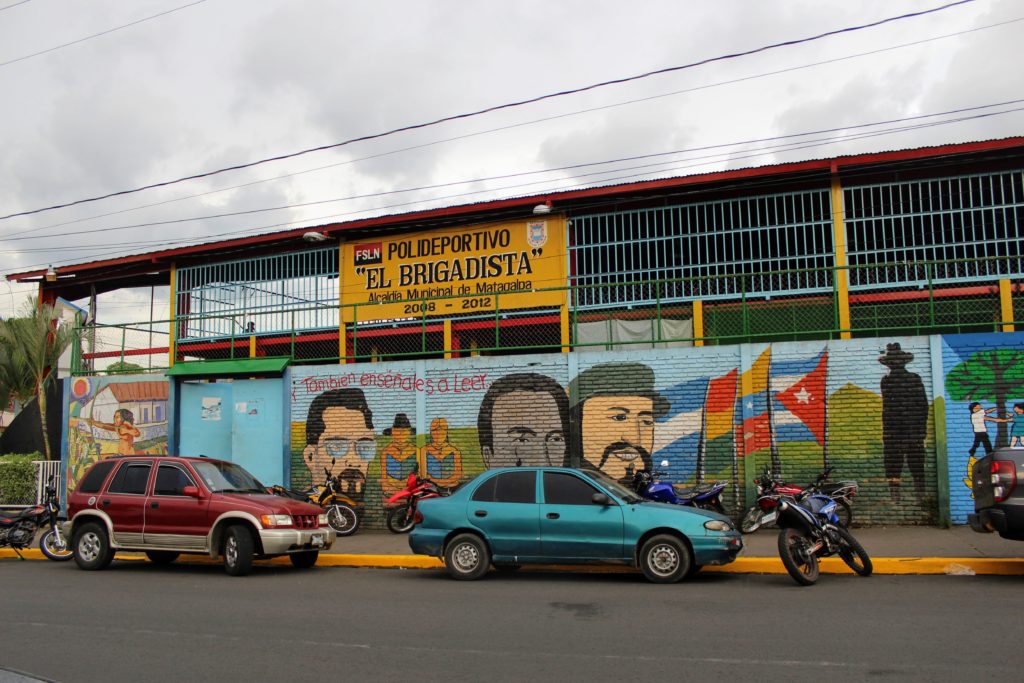
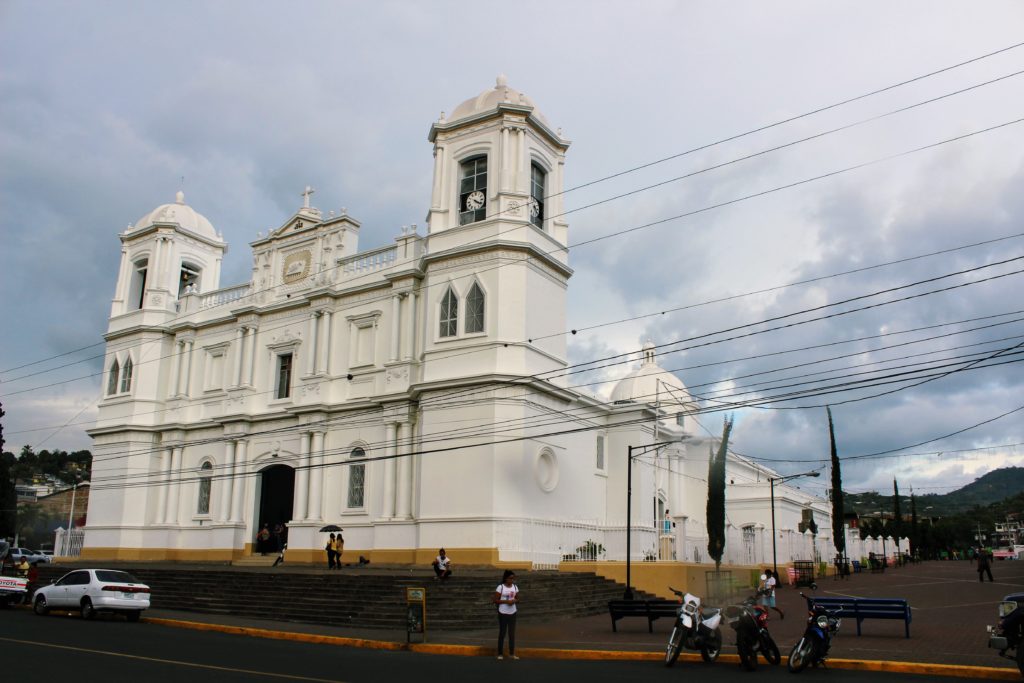
The most interesting thing about the San Pedro cathedral, built in 1879 is the cute sheep on its facade.

In the nearby Parque Morazán, the statues of Carlos Fonseca (on the right) and Tomás Borge, his long-time friend and the cofounder of the Sandinista Front, point the way to the future.
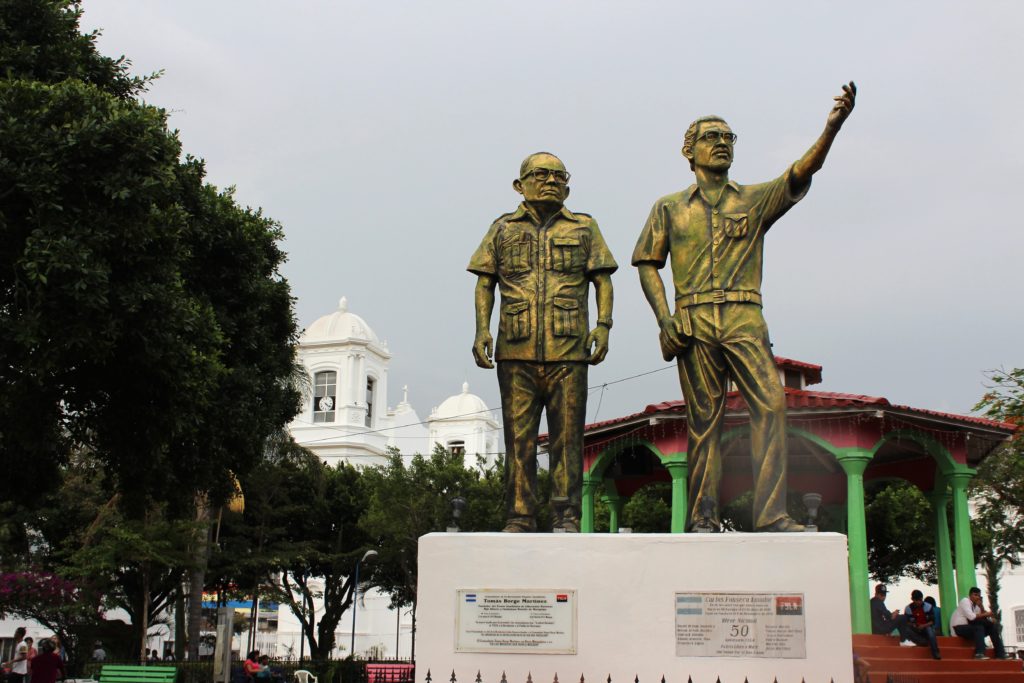
But the youngsters sitting on the stairs behind them, seemed to be much more interested in the current moment.
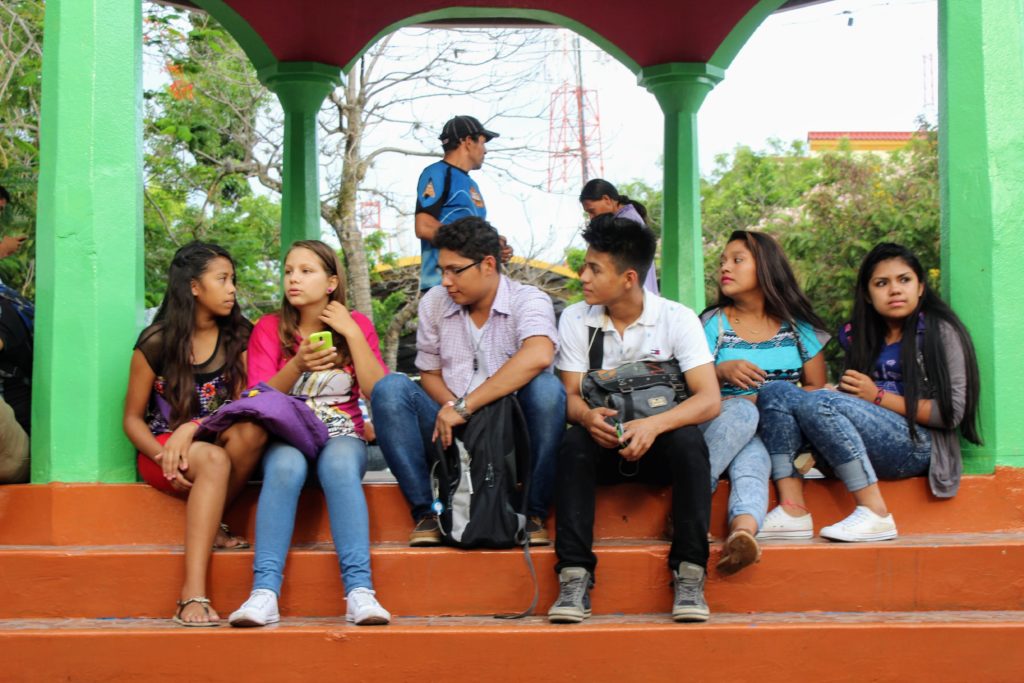
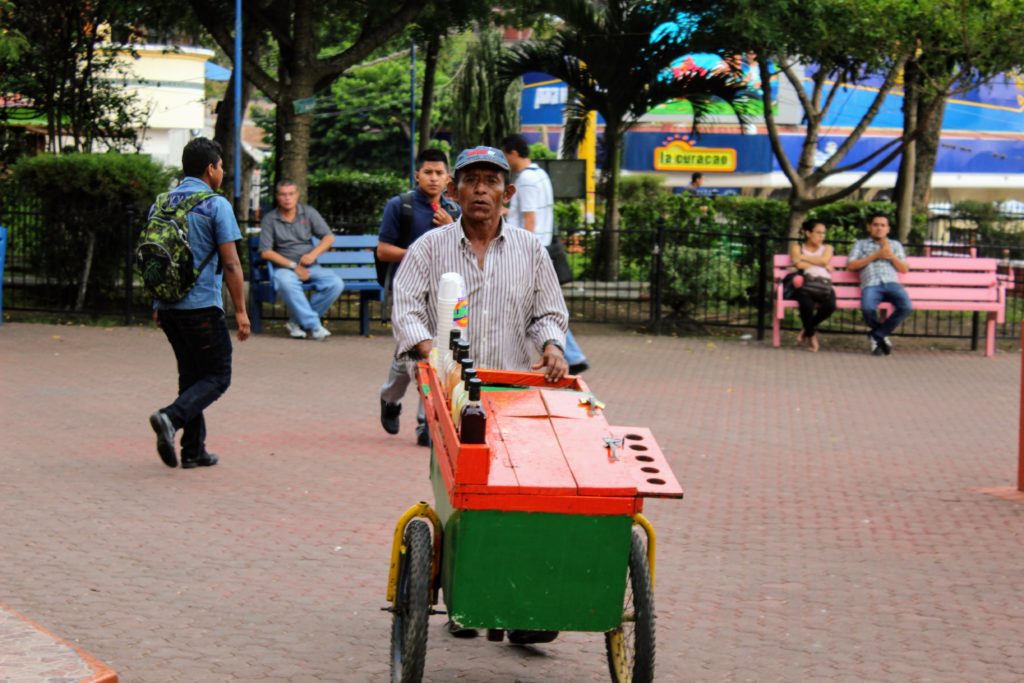
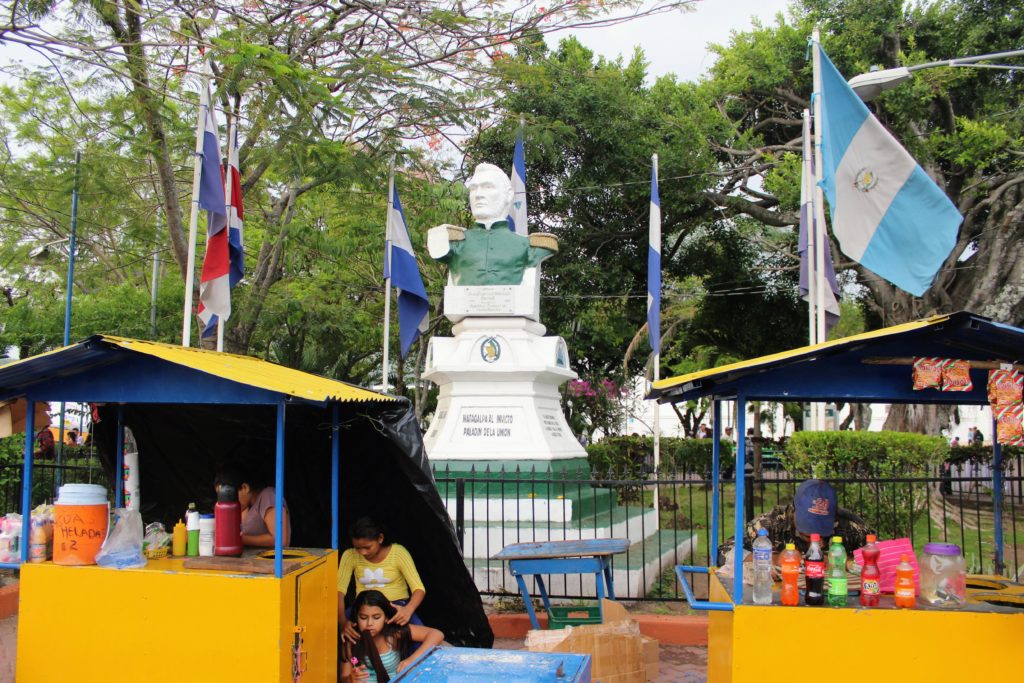
Taking the lively Avenue Jose Dolores Estrada, we passed numerous shops, and businesses.

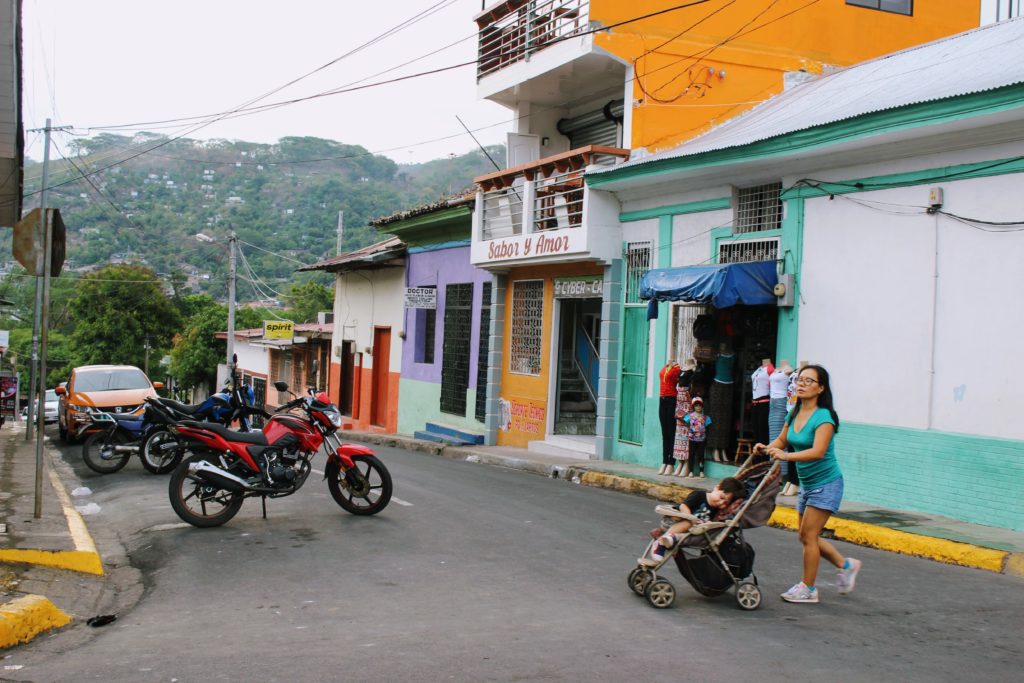
A large, toy-like statue of the national poet Rubén Darío is the most interesting sight in the namesake park.

While Ayan stayed with Oxanna exploring the park’s playground, I went to see the nearby museum of Carlos Fonseca.
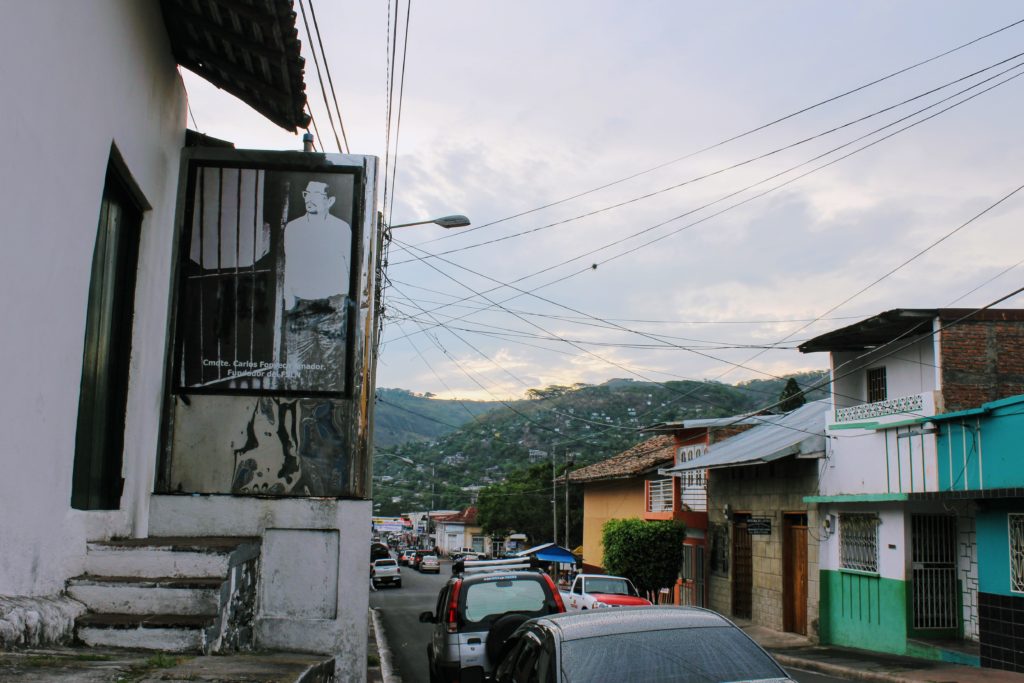
This small and simple house made of mud and wood, is his birthplace and childhood home. It was Saturday, and the museum was closed, so I got to see it only from the outside. Born here in 1936 to a poor peasant woman, Fonseca grew up to become a teacher, a librarian and a revolutionary.
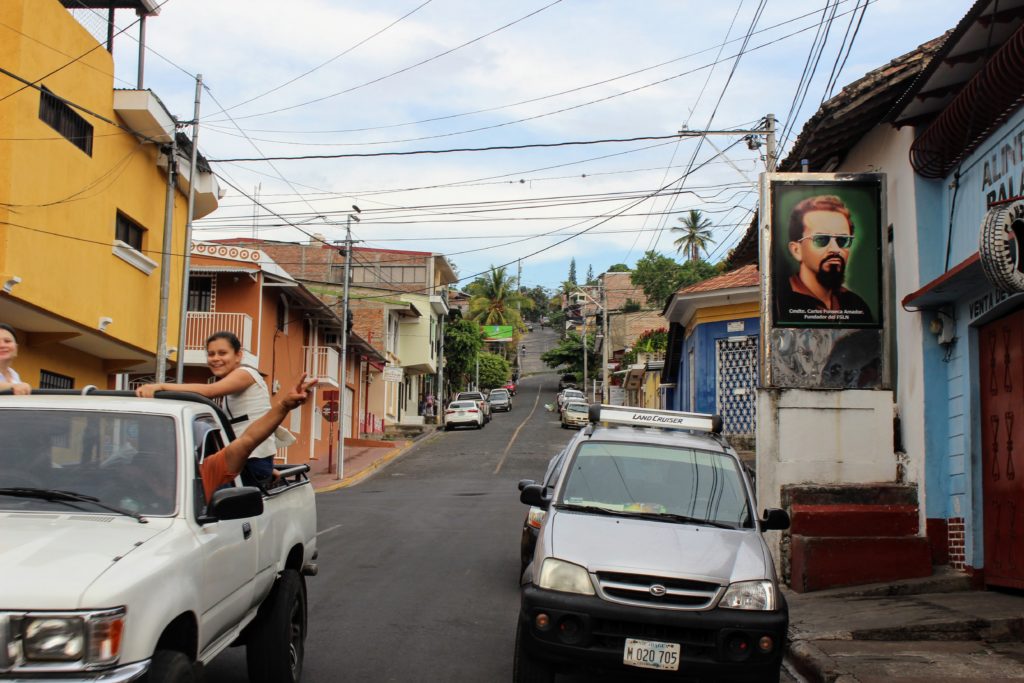
Inspired by the Cuban revolution, Fonseca founded the Sandinista Front. During his career as a revolutionary he traveled to USSR and was arrested 6 times in Nicaragua. He was killed in the mountains of Nicaragua in 1976, three years before the Sandinista Front overthrew the Somoza regime, which ruled as a family dictatorship from 1936 to 1979.
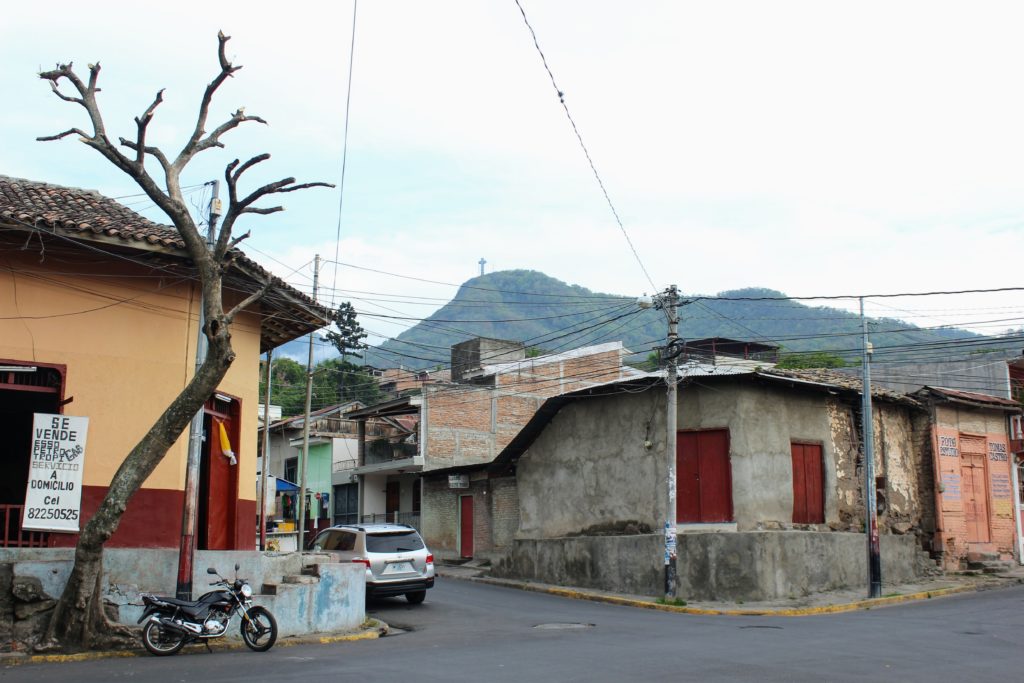
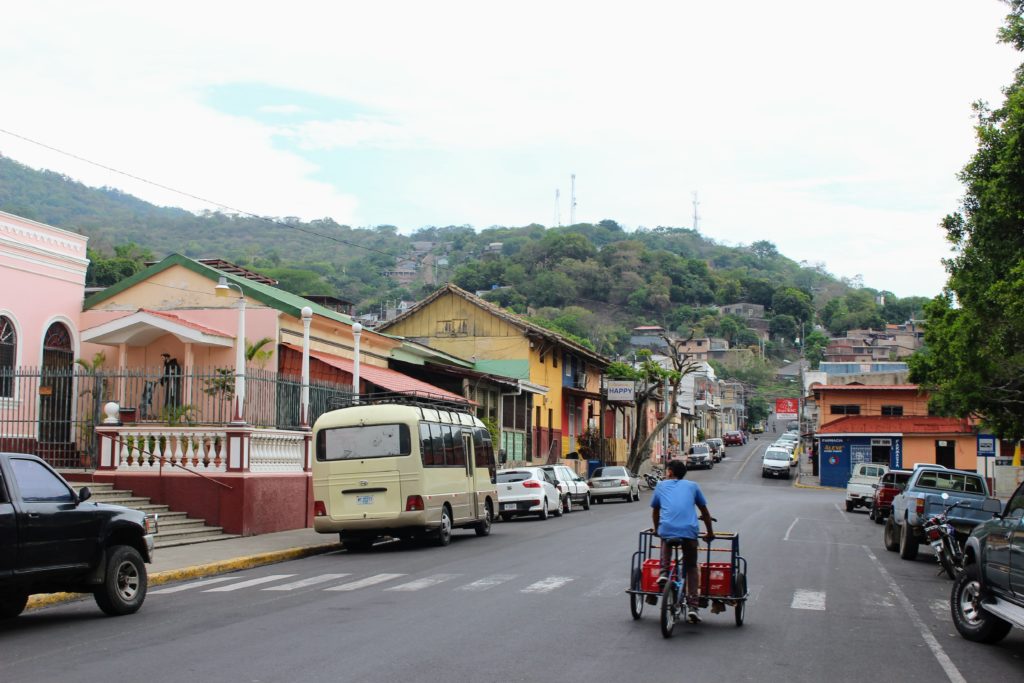
In front of the park, Parroquia San José exalts a pleasant rose.
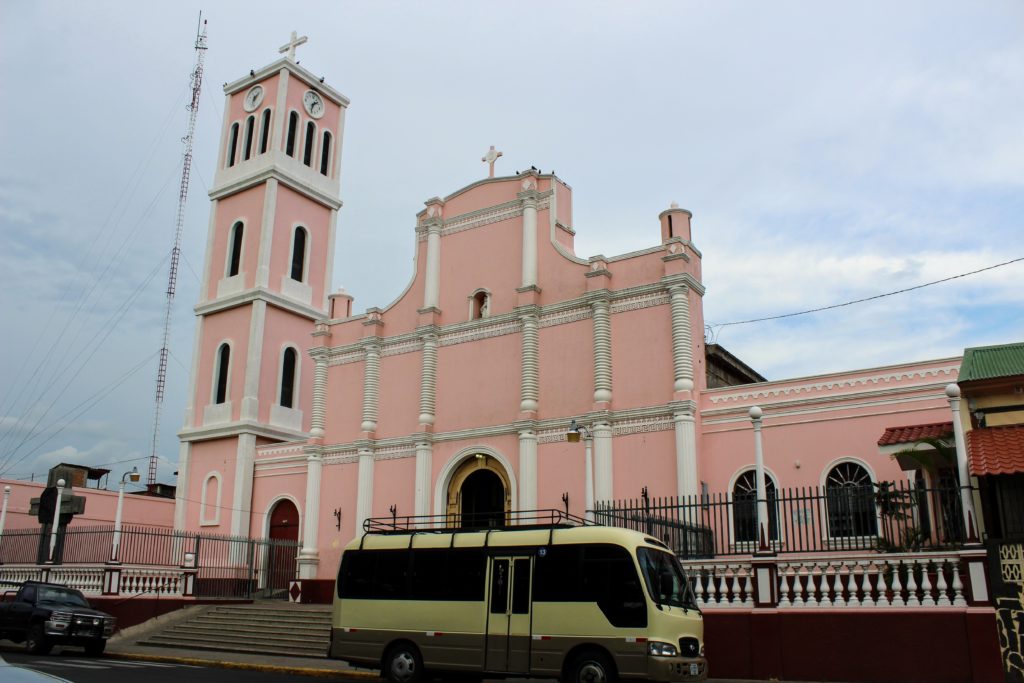
At the entrance to the church, a band was waiting for something.
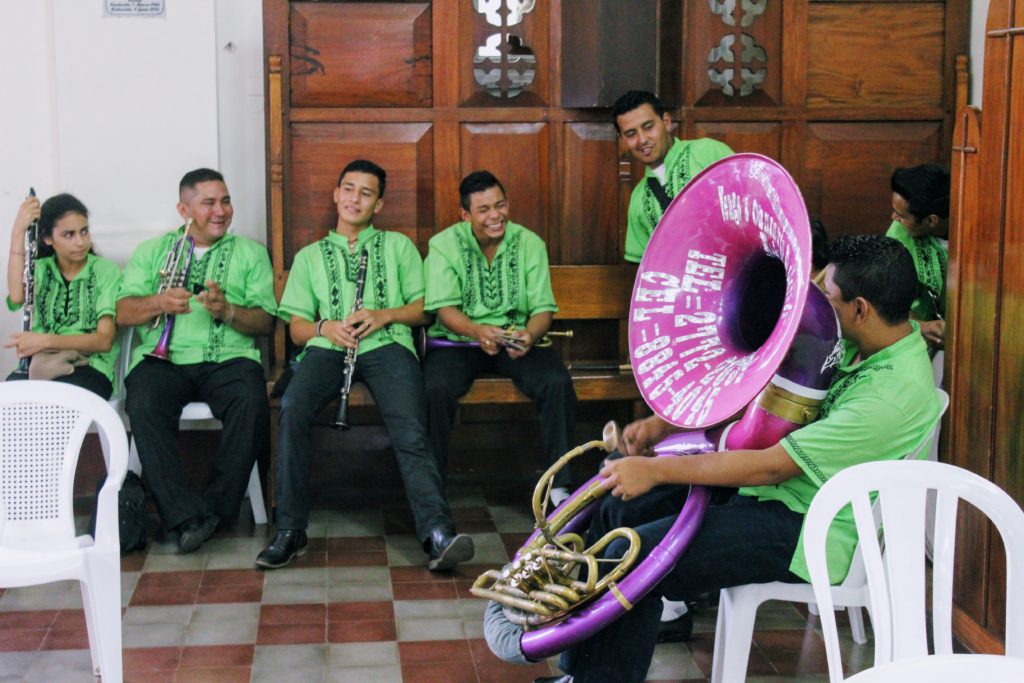
Inside, the nave was decorated with flowers. Men and women, dressed in white, sat in festive solemnity.
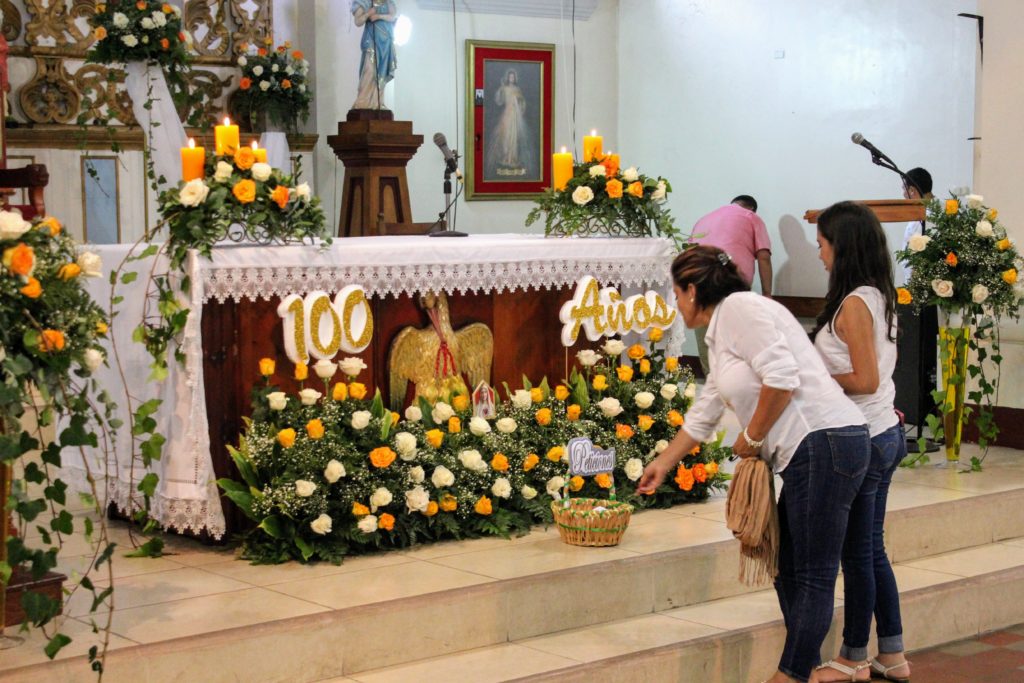
Soon everyone started to pour outside. The crowd quickly formed into a procession with alter boys at the front carrying a large cross.
The celebration turned out to be a 100-year anniversary of Our Lady of Fátima, a famed apparition of Virgin Mary reported in 1917 by three shepherd children near the town of Fátima, in Portugal.
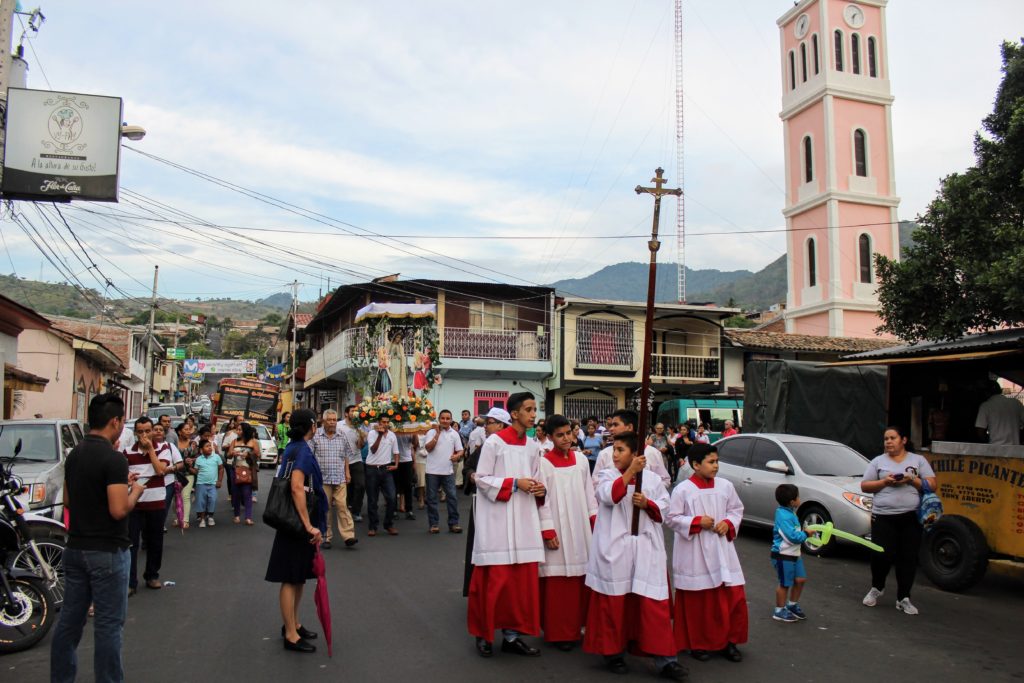
Behind the altar boys, several men were carrying a palanquin with a figurine of Our Lady of Fátima. Women were waving white handkerchiefs.
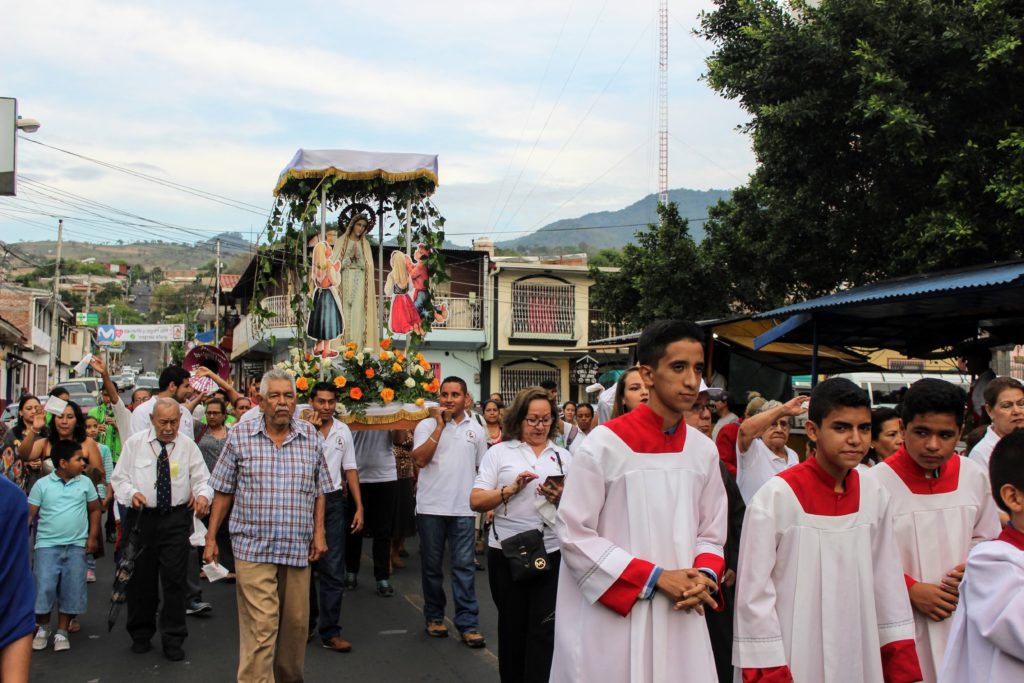
Closing the procession, the marching band set the rhythm.
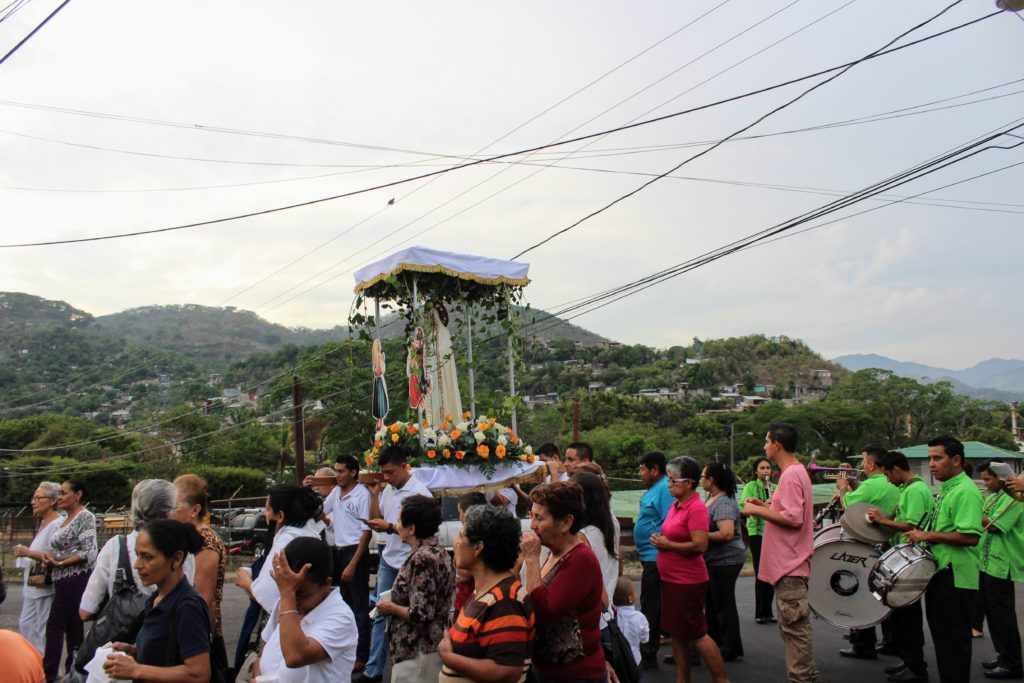

After following the procession for a few blocks, we stopped for a dinner in a Mexican restaurant. On our way back to the hostel, we happened to walk on a religious gathering of a different kind.
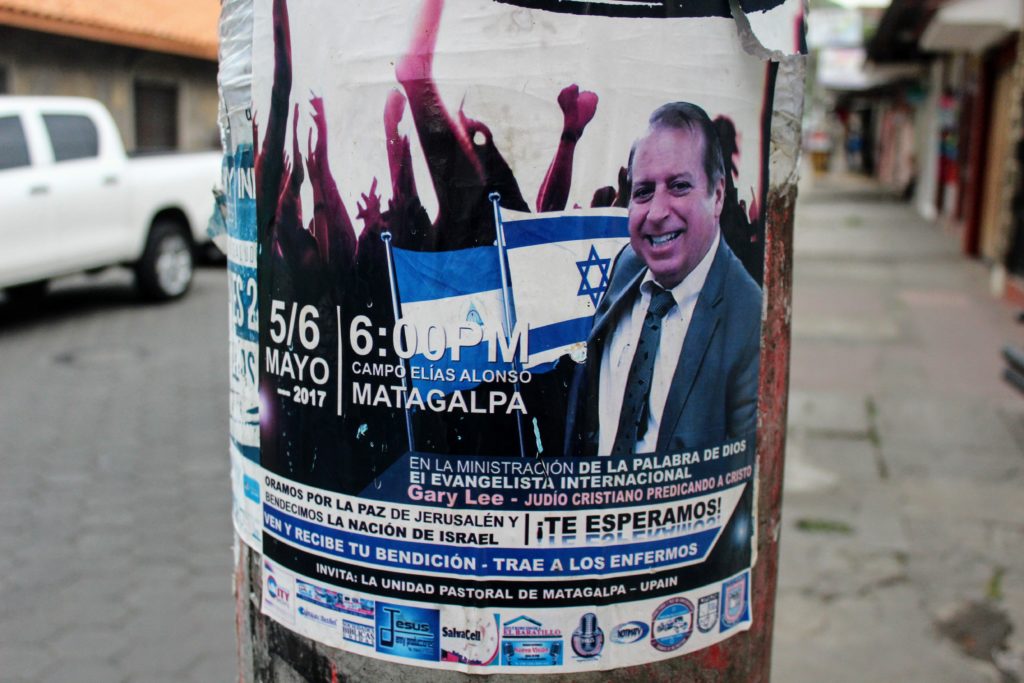
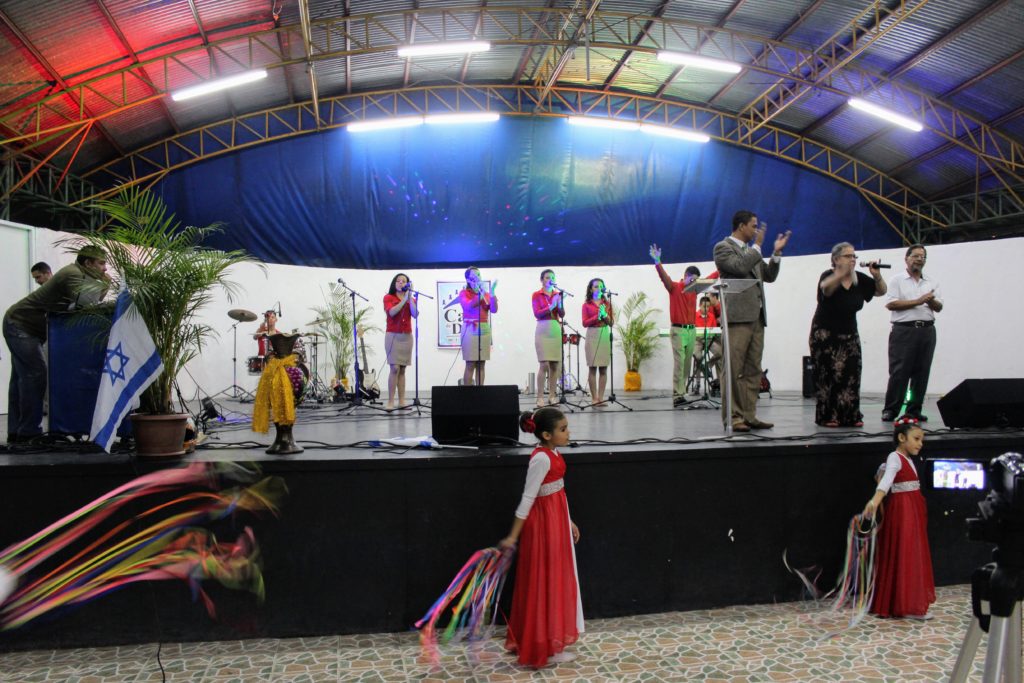
Auditorium decorated with Israeli flags. Girls waving colorful ribbons. A born-again older woman, standing on the scene next to the pastor, talking passionately about Jesus and her faith. That evening Evangelicals were having celebration of their own, that had nothing to do with Virgin Mary.
Evangelical congregation in Nicaragua has grown in recent years, reaching more than 25% of the population. Known for ecstatic forms of worship, energetic evangelization, and helping recent arrivals from the countryside adjust to city life, they draw many migrants into their congregations.
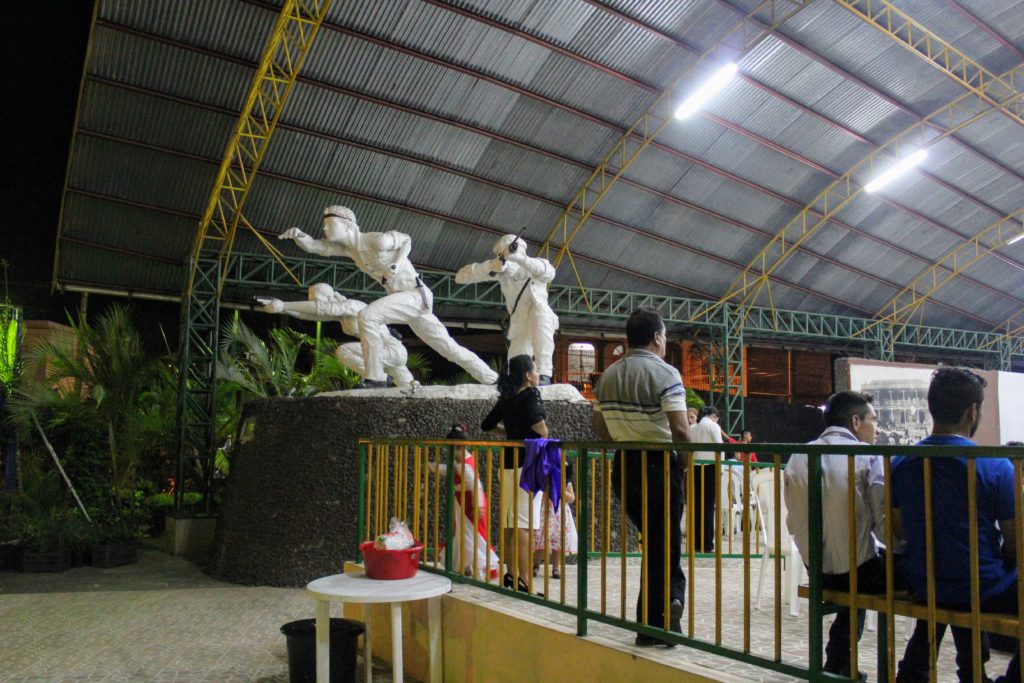
As an Israeli, I certainly didn’t expect to find Israeli flags flying in the highlands of Nicaragua. But one has to remember that evangelical support for Israel stems from their apocalyptic belief that the Jews must return to the Holy Land as a precondition for the second coming of Christ. One tiny problem Jews have with that particular belief is that the second messiah, according to evangelicals, will come only after a global assault on Israel, which will force all Jews to either convert or die.
Night descended on Matagalpa, when we finally headed back to our hostel. A city where catholic processions, revolutionary propaganda and Zionist insignia easily coexist, is a city worth visiting.
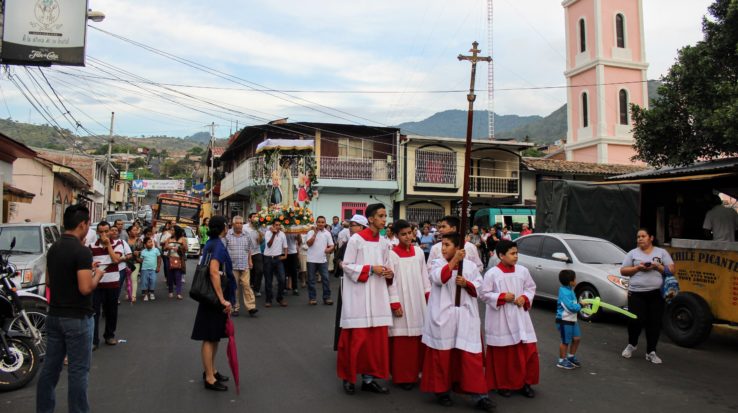
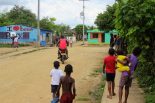
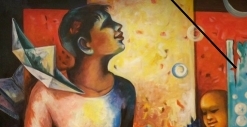
Thank you for covering the artistic and spiritual aspects of your travels… love your blog
Thank you Kellie, glad you enjoyed it 🙂
Super interesting and great photographs that capture “nuances” so well (like the Israeli flag announcing a US evangelical pastor’s arrival.
I love reading you; as an editor, I can tell you “professionally” that you are a good writer 🙂
תודה רבה!
Thank you Daphna for your kind words, glad you enjoyed it 🙂
Seeing Israeli flags in the middle of Central America was definitely unecpected))
I love the Jersualem fabric store!
Yeah, it was definitely surprising to see it, in Matagalpa of all places
Great tour commentary
Thanks Sid!
I am in Matagalpa now, sitting in my hostel thinking “Why am I here?” Thank you for giving me a plan of what to do…and why.
Hi Roy,
Glad to hear the post has given you ideas of what to see in the city. Would love to hear what did you discover that I missed?
To tell you the truth Mike, you said it all. I followed your instructions exactly. The museum was closed also when I was there. It is a working city and not very attractive…and very noisy. I planned on staying 5 days and stayed two. The only reason to visit the city is top find tours outside the city. I ended up staying 3 rewarding days at a rustic coffee finca outside of La Dalia called La Sombra…$50 per person, all inclusive, and the meals were fantastic and huge!
I had spent 4 weeks in San Juan del Sur and enjoyed it. I go to northern Ecuador for two months in Feb. 2020
Enjoy your travels.
Thanks Roy for an update. Yeah, Matagalpa doesn’t have a lot of tourist attractions, but I liked it’s energy and the climate.
Enjoy Ecuador, it’s great.
Thanks for a beautiful post about a city I’ve come to call home. I live up by the cross overlooking the city and have a constant cool breeze blowing through the house.
Got to disagree with Roy. One of the nice things about the city is its people. Just working class and friendly and you get a real feel for a place / culture. Travel for me is about this encounter, not necessarily all the “sites” or fine dining etc …. Others can have SJDS, I have my Matagalpa.
David…I will also agree with you. Living in a place, understanding it’s culture, and knowing the people is way different than somebody like myself who comes as a tourist for a few days. Thanks for your very kind rebuke.
PS. After Matagalpa City I went to a coffee finca outside of La Dalia and had a wonderful experience and connection with the people. Fortunately I speak Spanish.
Oh no rebuke really intended. Just saying we all travel with different wants, needs, expectations. I’ve done the same – thinking a place isn’t really great, only to return at a different time and experience it difference. Situational tourism I guess. And yes, despite all travel more than much of life is governed by chance …. Yes, been to La Dalia and beyond (Wasala). God’s country.